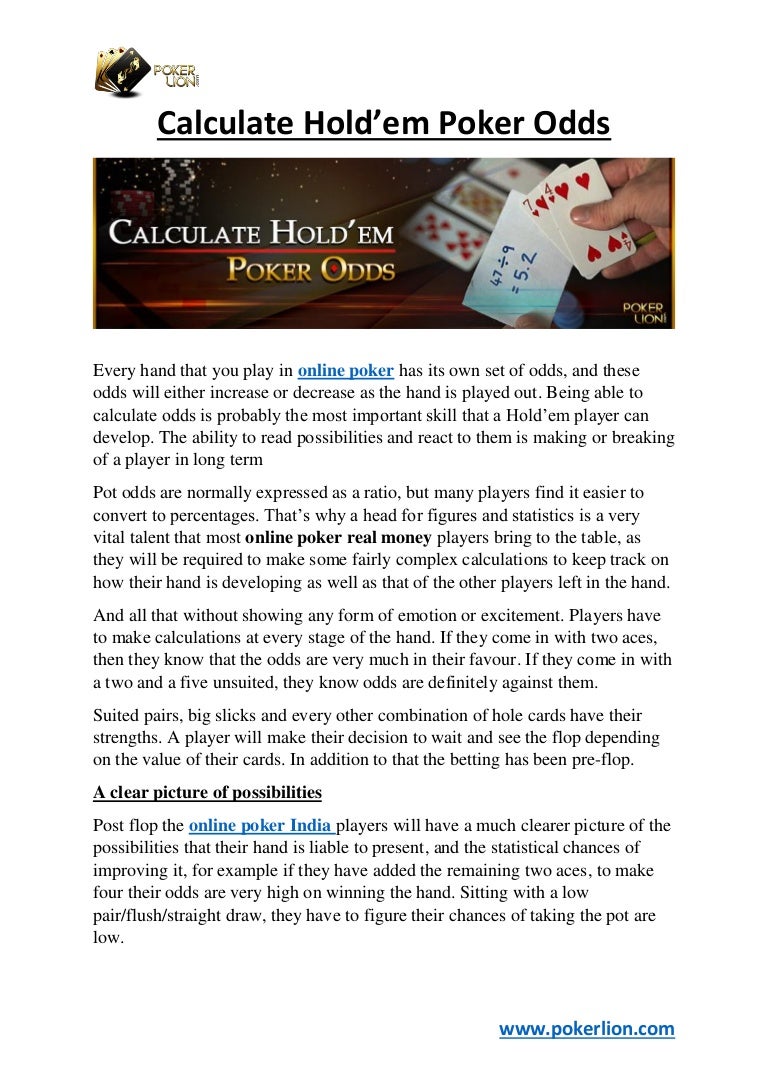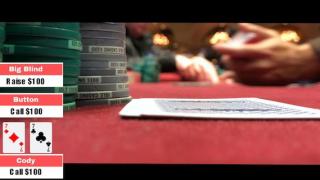Poker Odds Before The Flop

Are you good at math? Hmm, thought so. Neither am I.
A bet after the flop by a player who did not take the lead in betting before the flop (and when the player that did take the lead in betting before the flop declined to act). Compare with continuation bet prop, proposition player A player who gets paid an hourly rate to start poker games or to help them stay active. Odds so that they can make good bet sizing and calling decisions. The diagrams below summarize some key odds that every player needs to know, from the odds of getting certain starting hands to how those hands can play out over the flop, turn, and river. These odds are grouped according to the most critical hole card combinations: Pairs.


For many poker players, doing math calculations is the last thing on their mind when they sit down at the felt. They're there to play and have fun!
Still, poker is more fun when you win, and it helps to know the winning potential of starting cards. Remember, there's a reason for the saying, 'Never draw to an inside straight.'
Because figuring percentages in your head would slow down the game, should you bring a pocket calculator to the table? No way!

Fortunately, some situations repeat quite often in Texas hold 'em, and it's easy to memorize the math involved. Once that's done, you can concentrate on everything else going on at the table.
Today, let's re-examine the math of some common hold 'em situations originally listed in a 2006 LuckyDog Poker column:
— Being dealt any pocket pair in the hole — 6 percent (one in 17) chance. Getting A-A, K-K, Q-Q, or J-J as your starting hole cards — 1.8 percent (one in 56).
— Improving any pocket pair to trips on the flop — 12 percent (one in eight). If you don't make trips on the flop, there's a 9 percent (one in 11) chance of doing so on the turn and river cards.
— A no-pair starting hand improving to a pair on the flop (either card) — 32 percent (one in three).
— Completing an open-ended straight after the flop — 34 percent (one in three). For instance, you hold 10-9, the flop is J-8-2, and the last two cards are 4-7.
— Being dealt suited hole cards (two spades of any rank, for example) — 24 percent (one in four). Being dealt suited connectors such as Q-J of hearts — 4 percent (one in 25).
— Hitting two cards of your suit on the flop — 11 percent (one in nine). Completing a flush after two cards of your suit come on the flop — 39 percent (one in 2.6).
— Being dealt A-K to start — 1.2 percent (one in 83). With A-K in the pocket, hitting an ace or king by the river — 50 percent (one in two).
These numbers identify your chances of receiving certain starting cards and hitting specific hands, but that's not the whole story. Knowing these percentages allows you to calculate 'pot odds,' which gives you a mathematical reason for staying or folding.
Poker Odds Before The Flop Dance
For example, let's say after the flop you have an open-ended straight draw with a 34 percent (one in three) chance of making the straight by the end of the hand — 17 percent (one in six) chance of hitting on the turn card, plus 17 percent again to hit on the river.
In this case, as long as there is five times as much in the pot as the amount you must put in on a single bet, you're getting sufficient pot odds to stay in. In low-stakes limit games, calling usually is automatic. In no-limit, however, an opponent's big bet often negates your odds and you should fold.
Poker Odds Before The Flop Odds

Now, about those inside straight draws: Is it true you should 'never draw to an inside straight?' Actually, no!
Poker Odds Before Flop
Sure, most of the time you should fold because the chances of hitting your straight on the next card are slim (11 to one against). But on rare occasions, you'll have the proper pot odds to make the draw. Do the math!
E-mail your poker questions and comments to [email protected] for use in future columns. To find out more about Russ Scott and read previous LuckyDog Poker columns, visit creators.com or luckydogpoker.com.